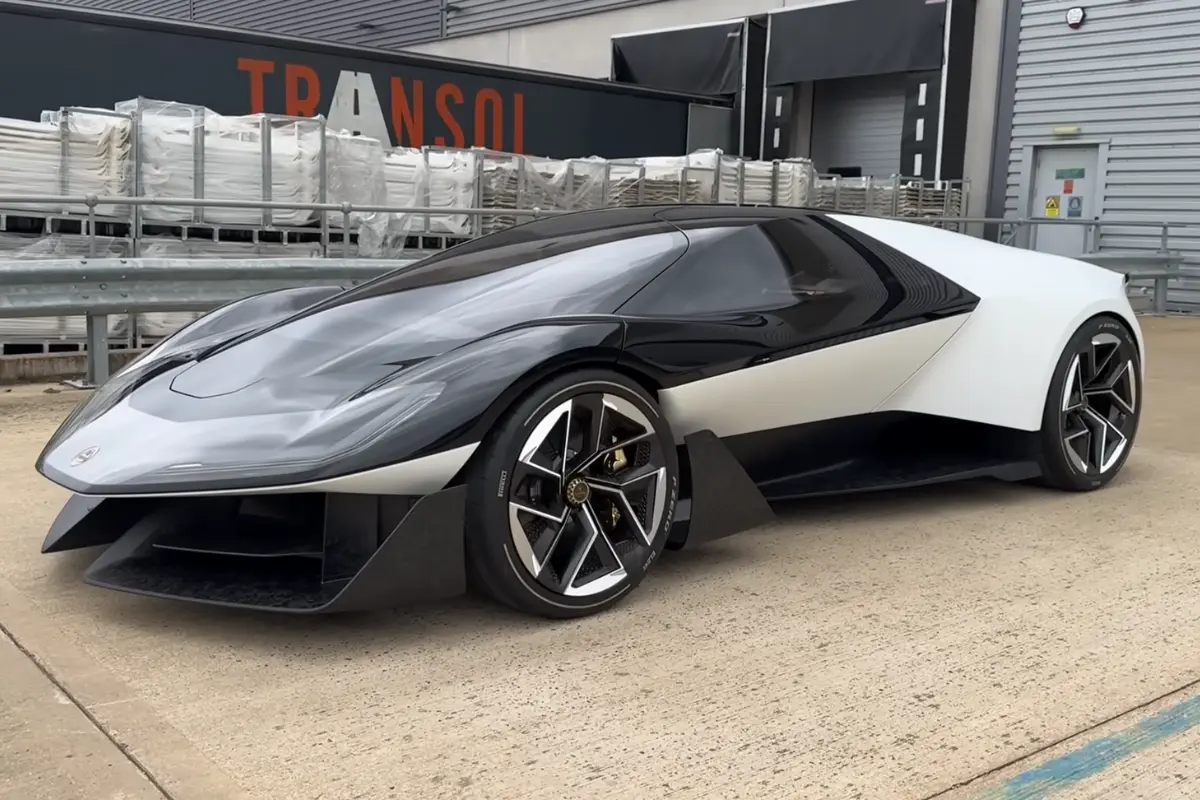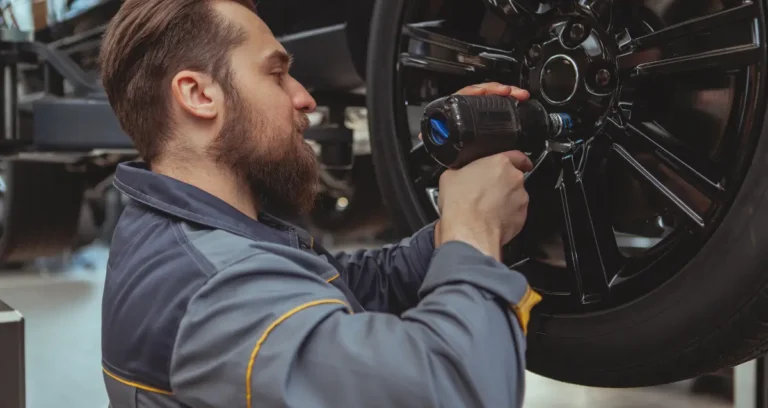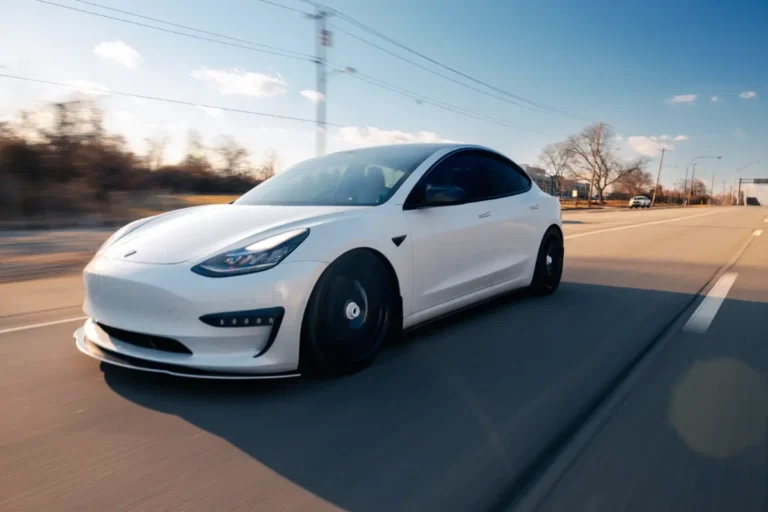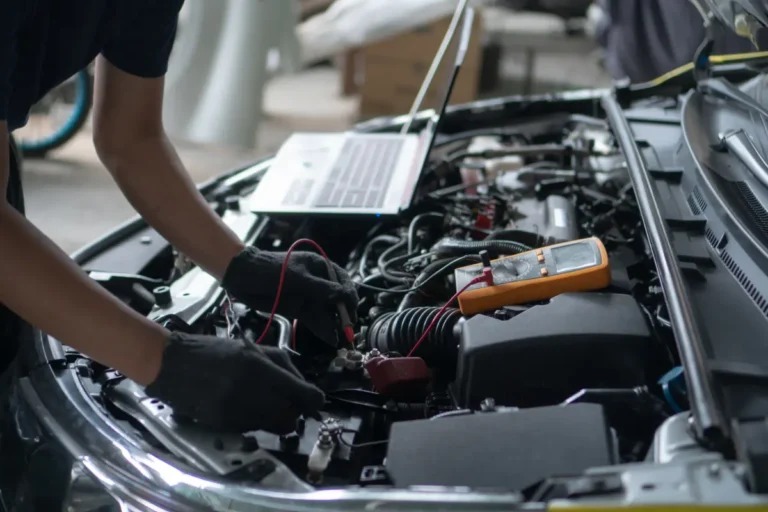The Lotus Theory 1 Concept: A Revolutionary Leap into Futuristic Automotive Design
The future of automotive innovation is here, and it’s taking the shape of the Lotus “Theory 1” concept car. At a secretive UK warehouse, Lotus unveiled their latest concept—a jaw-dropping vehicle loaded with cutting-edge technology, futuristic design elements, and features that seem straight out of a sci-fi movie. This is no ordinary concept car; the “Theory 1” showcases Lotus’ vision of the future, blending digital, natural, and analog elements into a stunning package that redefines what we expect from high-performance vehicles.
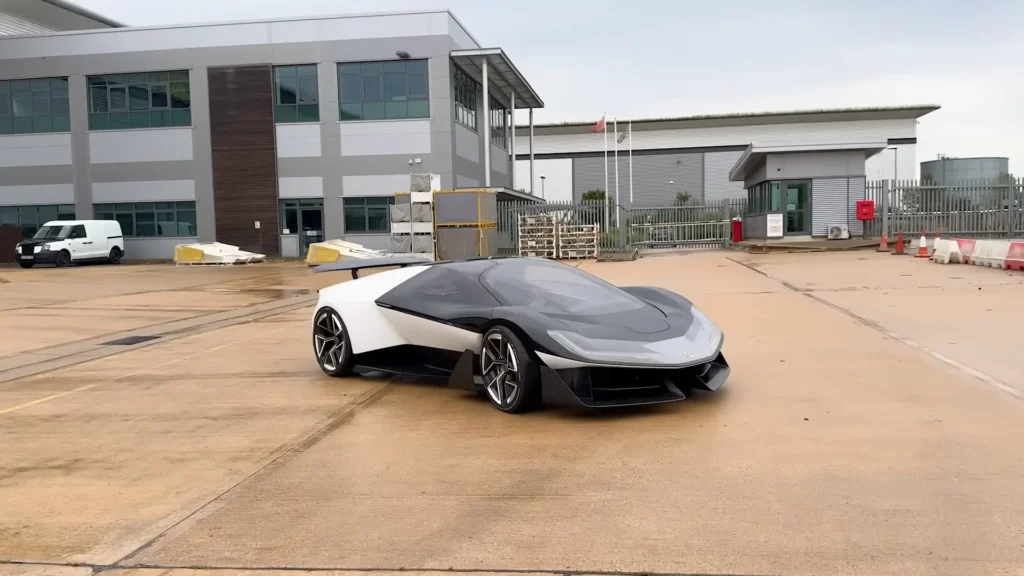
Here’s a detailed breakdown of what makes the Lotus Theory 1 a revolutionary concept.
A Futuristic Design Philosophy: “DNA”
The Theory 1 follows a design philosophy Lotus refers to as “DNA”—which stands for Digital, Natural, and Analog. Each of these elements is intertwined throughout the car’s design and technology:
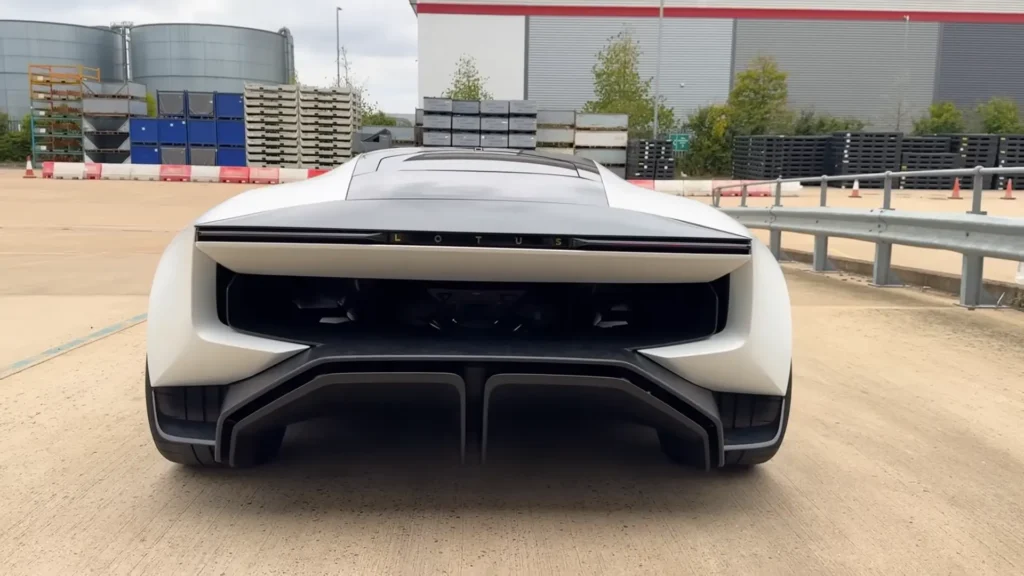
- Digital: Featuring state-of-the-art technology that controls everything from the car’s responsiveness to how it interacts with the driver.
- Natural: The design of the car feels organic and fluid, with a shape that mimics natural forms.
- Analog: Despite the high-tech interior, there’s a raw simplicity to the vehicle that brings it back to the essence of pure, unfiltered driving.
From the transparent panels to the minimalist exterior, this car represents an ideal future where technology and nature coexist harmoniously.
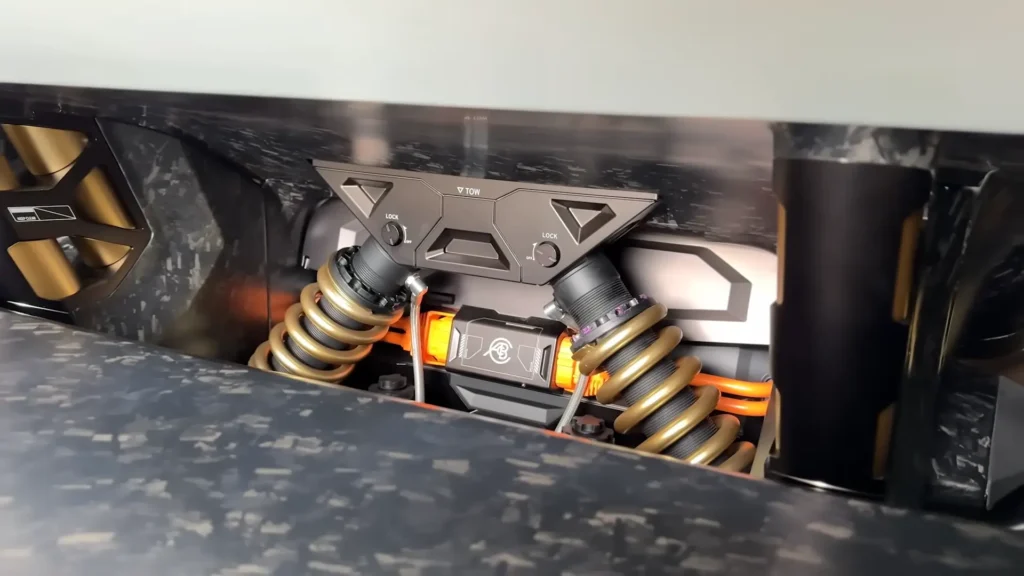
An Exterior Like No Other: Transparent Panels and Laser Lights
The first thing you notice about the Theory 1 is its transparent bodywork. Parts of the exterior allow you to see straight through to the car’s internals, providing a view of its intricate engineering. This see-through design element isn’t just for show—it’s part of the car’s sustainable approach, using recycled carbon fiber throughout the body.
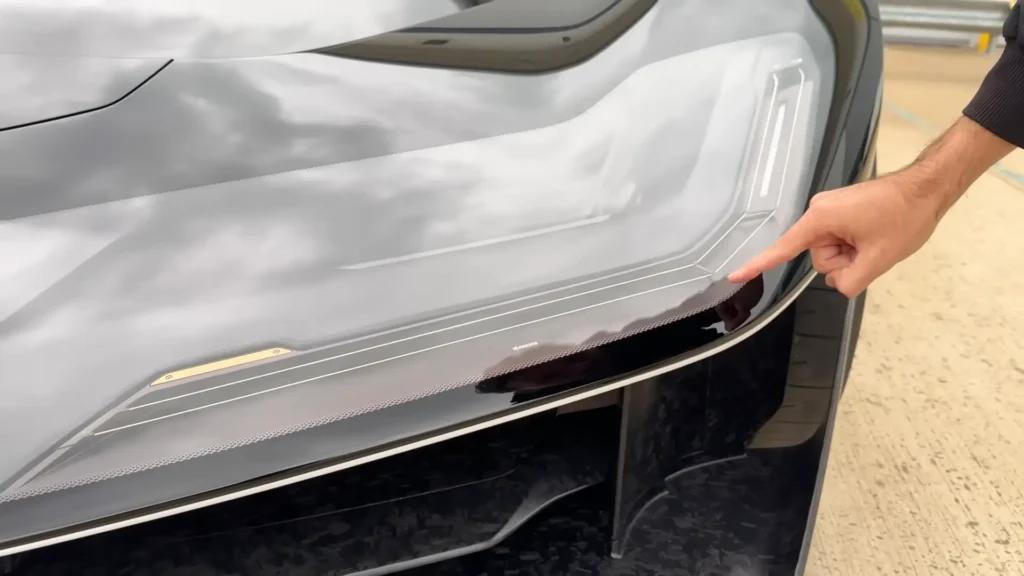
The lighting system is equally groundbreaking, featuring ultra-thin laser wires that replace traditional headlights and taillights. These laser wires are stretched across the body, creating the thinnest, most futuristic lighting system ever seen on a car. The headlamps are tensioned by minimal points, adding to the car’s sleek, futuristic appearance.
At the rear, the taillights are also composed of the same ultra-thin laser wires, so thin that they’re nearly invisible from certain angles. Combined with the open-ended rear design, which shows off the suspension and the car’s “bones,” the Theory 1 looks more like a spaceship than a traditional car.
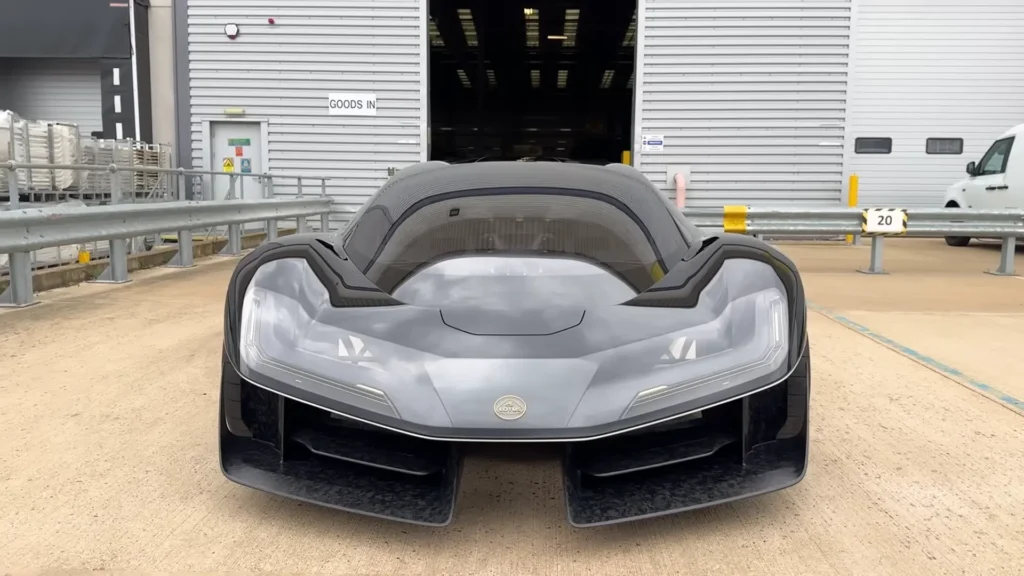
Shape-Shifting “Grasshopper” Doors
One of the standout features of the Theory 1 is its innovative Grasshopper doors. This door mechanism is unlike anything you’ve seen before, offering a unique blend of aesthetic beauty and functional design. With a simple swipe of a hand, the doors open vertically, lifting in an insect-like motion, hence the name “Grasshopper.”
The door mechanism doesn’t just offer a futuristic flair—it’s a functional design choice that contributes to the overall fluid, organic feel of the car. The doors’ motion highlights Lotus’ dedication to blending nature-inspired designs with cutting-edge tech.
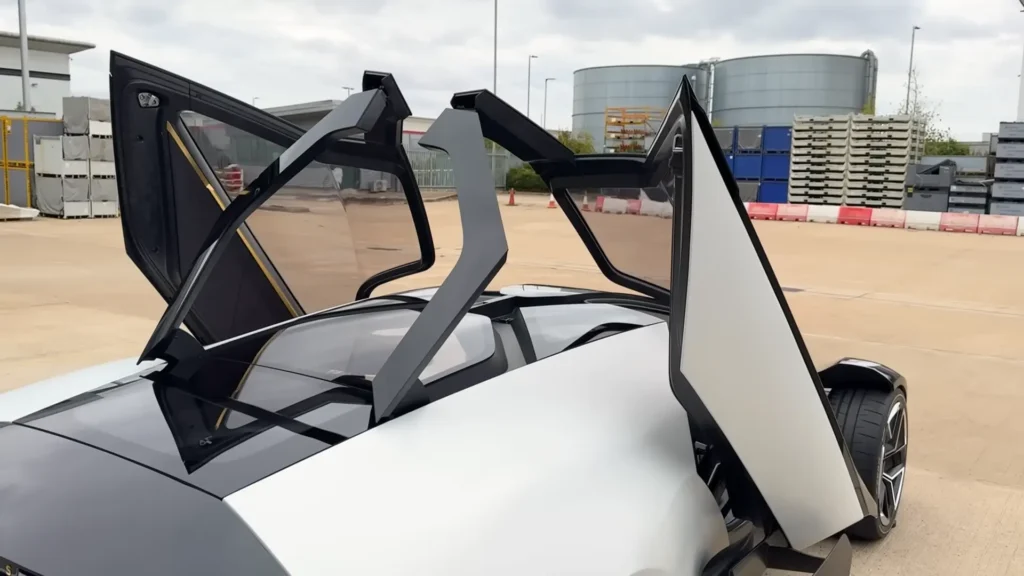
Nvidia-Powered Computing: The Brain Behind the Car
At the core of the Theory 1’s intelligence is its Nvidia-powered computing system, which processes an immense amount of data in real time. This advanced system reads the road thousands of times per second, adjusting the car’s performance based on everything from driving conditions to nearby obstacles.
While Nvidia’s technology has already been implemented in various production cars, the Theory 1 takes it to the next level, integrating it seamlessly with the vehicle’s other high-tech features. From performance optimization to safety enhancements, the Nvidia system acts as the car’s brain, ensuring that the Theory 1 delivers a futuristic driving experience.
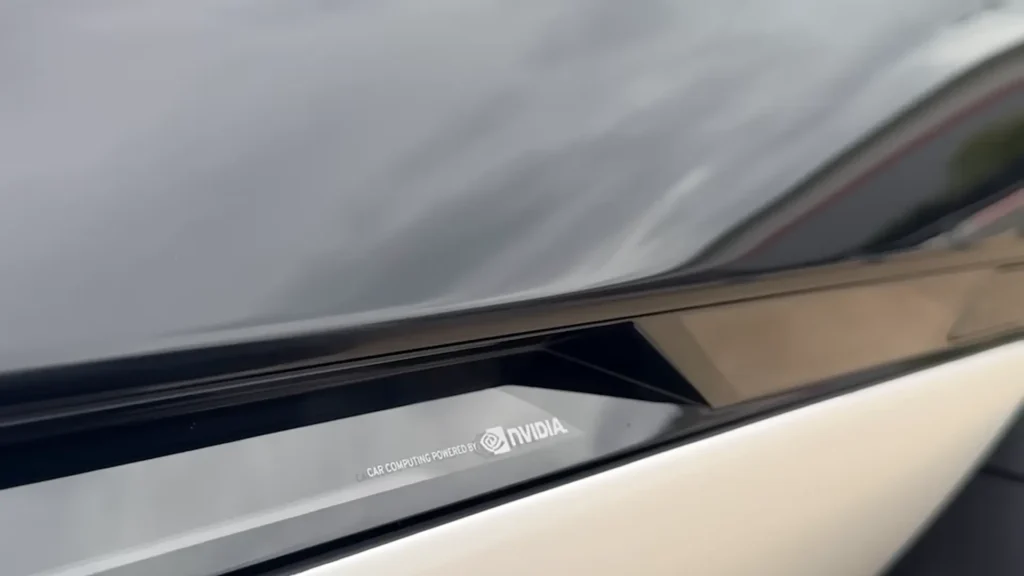
Hovering Seats with Haptic Feedback
Inside the car, Lotus introduces an innovation that may change how we think about automotive interiors—hovering seats. The driver’s seat is mounted in the center of the car, suspended from the roof, giving the appearance of a floating seat. This setup maximizes interior space and provides a sleek, futuristic look.
But it’s not just about aesthetics. These seats are equipped with haptic feedback, which reacts to the car’s movements and alerts the driver in real-time. Whether it’s a subtle warning of an approaching car or a blind spot, the seats vibrate to provide an extra layer of sensory information. Both the driver and passengers benefit from this system, ensuring that everyone in the car is part of the driving experience.
The floating seats and advanced haptics create an immersive driving experience, combining comfort with intuitive interaction between the car and its occupants.
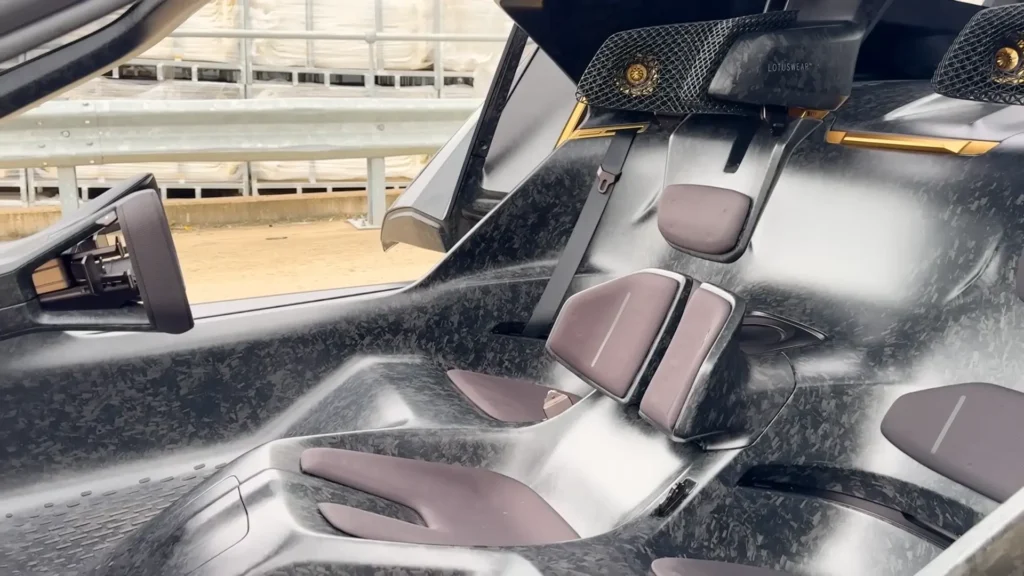
Binaural Audio and Integrated Design
Another groundbreaking feature is the car’s binaural audio system, integrated directly into the headrests. This advanced sound system offers an immersive 3D audio experience, making it feel as though you’re surrounded by sound, no matter where you are. This binaural audio makes long drives more enjoyable and adds another layer of immersion to the already futuristic interior.
The interior also follows a minimalistic approach. Everything is built into the body of the car, from the seats to the audio system, creating a seamless and integrated cabin. No detachable parts—just a single, continuous design that flows from the front to the back.
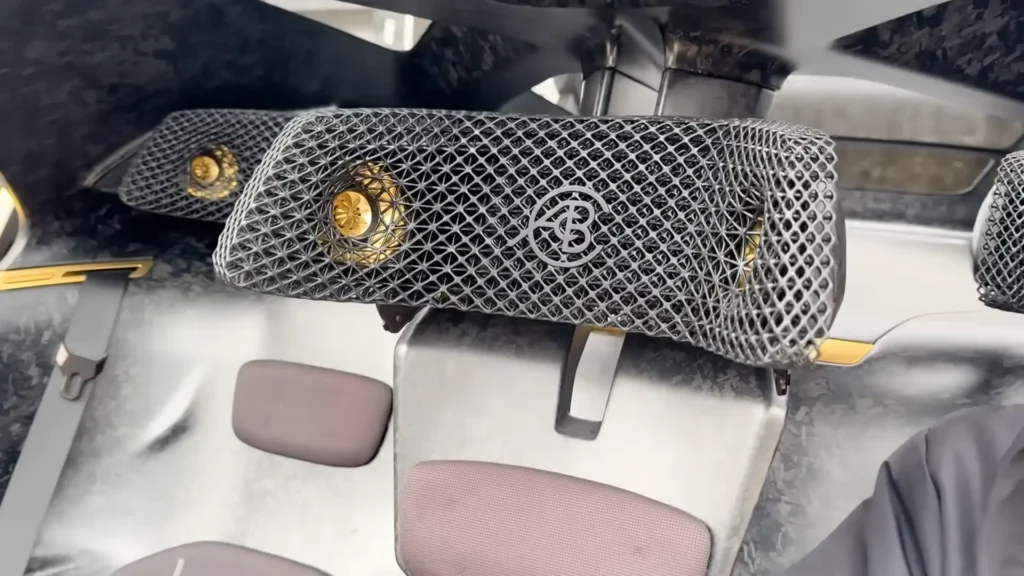
Cutting-Edge Driver’s Interface: Transparent Displays and Responsive Controls
Sitting behind the wheel of the Theory 1 feels like you’ve stepped into the cockpit of a spacecraft. The steering wheel extends to greet the driver, and the pedals adjust automatically to your height. As you sit in the driver’s seat, transparent glass panels display the car’s side-view camera feeds, transforming into screens only when needed.
The dashboard itself is mostly made of glass, with digital displays projected onto the surface. Everything from your speed to navigation is shown on these transparent screens, blending high-tech functionality with a clean, minimalist design. The car also offers full haptic feedback in the steering wheel, allowing the driver to feel subtle vibrations when certain hazards or conditions arise.
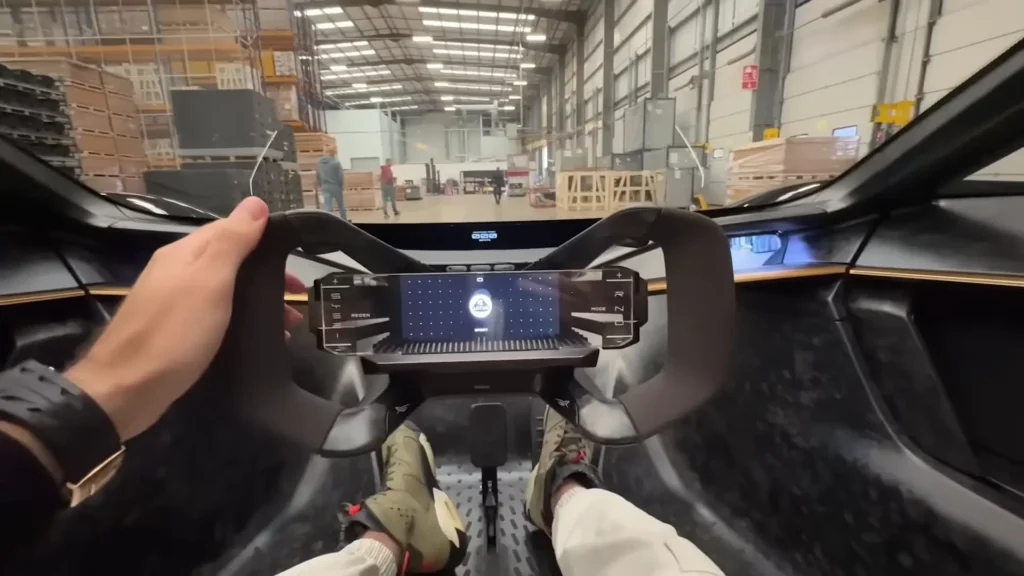
Real Driving Experience
Unlike many concept cars that never make it beyond the showroom floor, the Theory 1 is fully drivable. This isn’t just a design shell—it’s a real vehicle that you can take for a spin. And the experience of driving the Theory 1 feels as futuristic as its design suggests. With its advanced aerodynamics, responsive steering, and shape-shifting components like the spoiler, this concept car is as much about performance as it is about aesthetics.
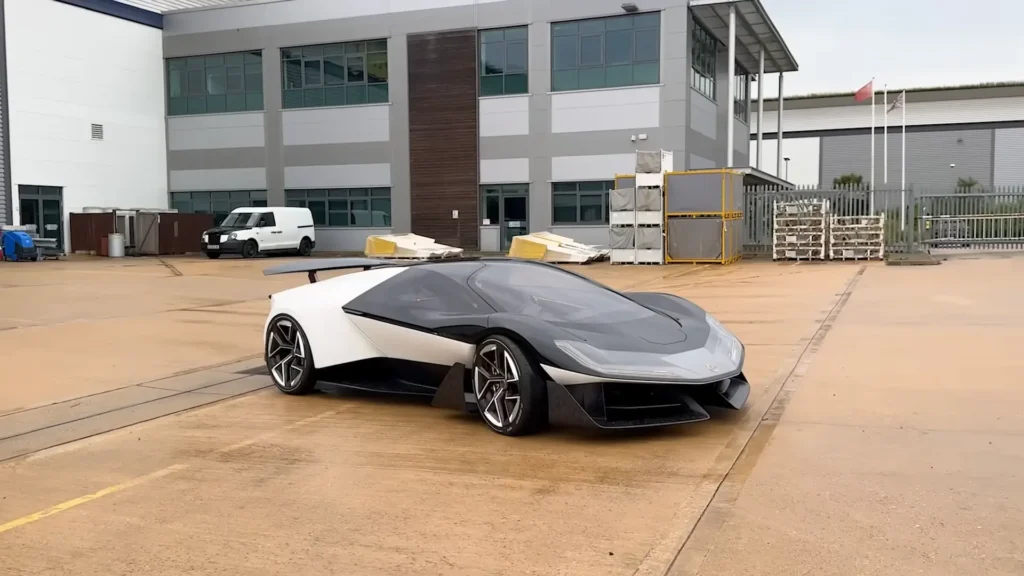
Conclusion: The Future of Automotive Design
The Lotus Theory 1 concept is a glimpse into the future of automotive design and technology. With its transparent panels, hovering seats, Nvidia-powered computing, and shape-shifting doors, it sets a new standard for what’s possible in a concept car. Lotus has successfully blended the natural and digital worlds into one seamless experience, showing us that the future of driving is not just about speed and power—it’s about innovation, sustainability, and a deeper connection between man, machine, and nature.
Whether the Theory 1 makes it to production or not, it’s clear that the future of Lotus is bright, and this concept serves as a bold statement of intent. It’s a car that challenges the boundaries of design and engineering, offering a tantalizing look at what the roads of tomorrow might hold.

